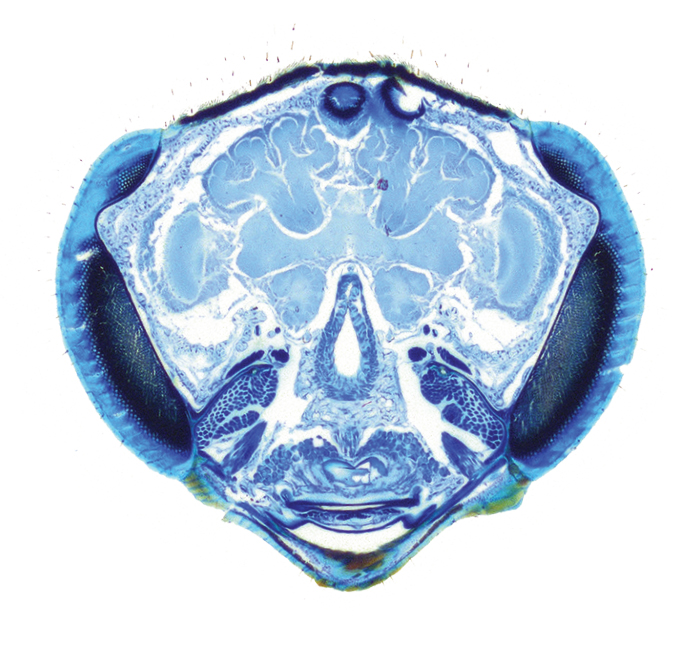
_Meghan Barrett
Barrett is a PhD candidate in the College of Arts and Sciences studying neuroanatomy and thermoregulation in Hymenoptera (bees, ants, wasps). She is also earning a master’s degree in undergraduate STEM education with Drexel’s Center for the Advancement of STEM Teaching and Learning Excellence.
Large, aggressive males patrol the ground at high speeds, landing to help dig out females from their hibernation, while fighting off other males. Smaller males hover on the periphery, looking to mate with females who escape themselves, or even steal them away from other, busily fighting males. Though the smaller males have lower reproductive success, Meghan Barrett, a PhD candidate in the College of Arts and Sciences, has hypothesized that warming temperatures may favor their method because small males are able to spend most of their time in the shade.
Wasp_Wiring
Researchers use clean wasp brain slices to quantify different regions of the brain, estimate volume across the total brain and observe how hierarchy of brain matter helps the wasps adapt to different conditions.
To test her theory, Barrett is studying morphological differences between large and small males and how different sensory mate location strategies impact resource allocation in the brain. Then, she will explore whether large or small male mating behaviors may face higher selective pressure under climate change.
“Behavioral and morphological variability have not gotten the attention they deserve in previous iterations of climate change research,” Barrett says.

